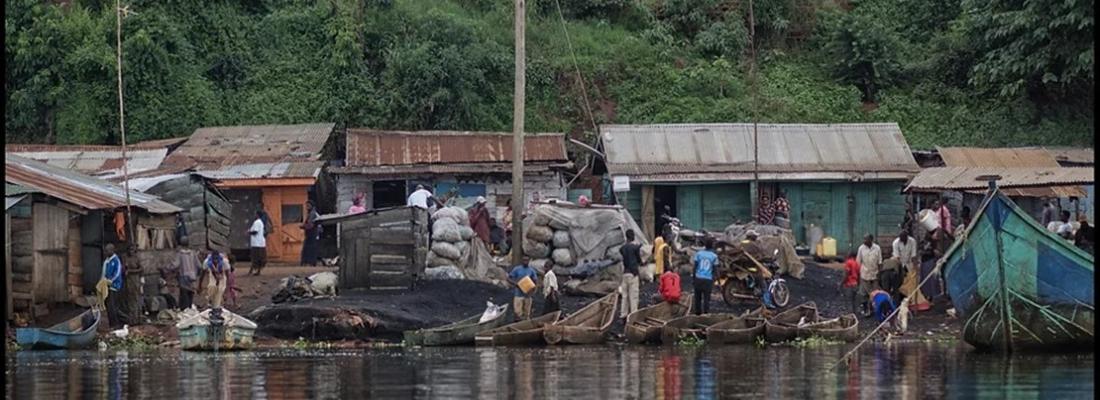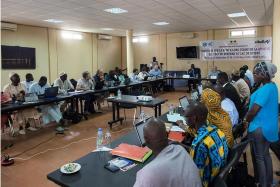WaSAf, protecting surface freshwater sources in Africa
Published on 16 March 2022

When it comes to freshwater sources, the stakes are global in ecological, economic and political terms. Concerns about these resources have to do with accessibility and quality, in a context of mounting anthropogenic pressure generated from population growth and man-made activities. Increasingly significant differences are being observed in the ecological trajectories of continental aquatic ecosystems between developed and developing countries. In the former, a dynamic of restoration is being observed thanks to, notably, controlled nutrient inputs (eg phosphate) and lesser organic pollution (eg thanks to improved wastewater treatment); in the latter, a reverse process of disintegrating aquatic ecosystems with multiple consequences on their functioning and uses has been reported.
Coordinated by Jean-François Humbert, an INRAE research director at the Institute of Ecology and Environmental Sciences in Paris, WaSAf is an international project on the monitoring and protection of surface continental aquatic systems used to produce drinking water in three African countries: Ivory Coast, Senegal and Uganda. Since 2016, it has brought together a consortium of African and French research teams studying human and environmental sciences. The project is now nearing its end: in March 2021, a symposium for the Ugandan results took place; in March 2022, on the occasion of the World Water Forum in Dakar (Senegal), major findings will be published with a simultaneous event to present the project in greater detail and broaden exchanges; and lastly, results in Abidjan, Ivory Coast, will be revealed the following week.
These dates are an opportunity for Jean-François Humbert to take stock of the work done so far. We sit down with him to ask some questions.
How does this project serve local authorities and society at large?
The WaSAf project focussed on three continental aquatic ecosystems in Africa (Aghien Lagoon, Ivory Coast; Lake Guiers, Senegal; and Lake Victoria, Uganda) used to produce drinking water to supply large cities (Abidjan in Ivory Coast, Dakar in Senegal and Kampala in Uganda) and for multiple domestic and food-related purposes by local populations living on their shores. Its goal was threefold: take stock of the state of health of these bodies of water, with a particular focus on their trophic state and vulnerability to the proliferation of cyanobacteria; help the water institutions of the three countries implement or improve long-term surveillance programmes of these water sources that are vital to each country; and lastly to work with these institutions to develop protection/restoration strategies for these ecosystems. The project also sought to work with local populations who have daily contact with these lakes to get a sense of how they perceive the state of these resources and the threats to their health. As such, the WaSAf project has been a tremendous human adventure, both in terms of collaboration between the African and French research teams and the very close contact we have had with local populations while carrying out research on their lakes.

Our research has made it possible to:
- Provide water institutions with data about the state and vulnerability of their resources
- Train young scientists in each of the three countries, now able to apply their skills to monitoring and managing these ecosystems
- Train technicians and engineers in water sector institutions on the issue of cyanobacteria
- Raise awareness among local populations about water quality issues and the risks associated with degraded water resources
- Work with local institutions to set up environmental observatories to allow for the long-term surveillance of these ecosystems and improve their management.
In practice, the WaSAf project has generated many findings now being published in international scientific journals or in the form of Policy Briefs intended for water institutions.
What are the limits of this project?
While collaboration with the national institutions of the three countries has been fruitful, allowing us to obtain quality data and propose solutions to improve the surveillance and management of these ecosystems, implementing and finalising these solutions was not always possible for several reasons. It became clear to us that the role of scientists in the public life of these countries remains to be defined (but this is also largely the case in many developed countries), and that it is at odds with political and economic interests entirely out of our control, obviously.
Can the findings of the WaSAf project be extended to other countries?
The findings from this project can probably be applied to many developing countries in the intertropical zone, whether in Africa or Asia. In all of these countries, strong population growth goes hand in hand with an increase in the uses made of these ecosystems and, at the same time, mounting pollution levels. In particular, the near-total absence of wastewater treatment and the development of agriculture to respond to the food needs of these countries are currently causing a rise in phosphorus and nitrogen levels in these aquatic ecosystems. This is what we call eutrophication. Eutrophication has many negative consequences on the functioning of these ecosystems, on the uses that can be made of water, in particular the production of drinking water, and on the health of the human and animal populations who consume water from these sources. Developed countries (in Europe and America) experienced the same phenomenon from the mid-20th century and continue to invest massively to try and reconquer a better quality of surface freshwater sources. What is in store for developing countries with much more limited financial resources and much more vulnerable populations remains to be seen.
FIND OUT MORE
Ahoutou M. et al. (2021). Assessment of some key indicators of the ecological status of an African freshwater lagoon (Lagoon Aghien, Ivory Coast). PLoS ONE 16, e0251065.
Olokotum M. et al. (2021). High nutrient loading and climatic parameters influence the dominance and dissimilarity of toxigenic cyanobacteria in northern bays of Lake Victoria. Journal of Great Lakes Research 47, 985.
Tall Y. et al. (2021). Choisir de lutter contre certaines pollutions plutôt que d’autres. Mise en visibilité et ignorance des facteurs de dégradation du Lac de Guiers. Revue d’Anthropologie des Connaissances 15, 1.
